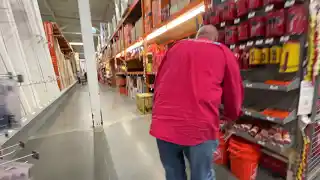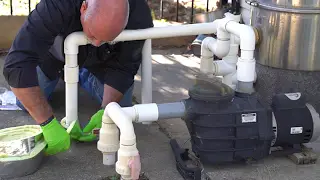If you’ve ever felt a surge of panic opening your water bill, or watched helplessly as a leaky fixture drained your budget, you’re not alone. Small oversights often lead to big expenses—from hidden slab leaks to wintertime pipe bursts. Luckily, most of these pitfalls can be prevented with basic know-how and regular maintenance.
Below are the top 13 plumbing mistakes that waste money and resources, plus practical solutions to safeguard your home, your health, and your wallet.
1. Ignoring Leaks
It might sound obvious, but leaks are the biggest money-waster in residential plumbing. A slow drip can accumulate hundreds of gallons of wasted water per month, escalating your bill and risking long-term damage.
- Why it’s costly: Even small leaks add up, and larger or hidden ones can cause structural issues like mold or wood rot.
- Quick fix: Routinely inspect under sinks, near water heaters, and behind toilets. Check your water meter when nothing is running—if the dial moves, you likely have a leak.
2. Relying on Chemical Drain Cleaners
Chemical drain cleaners promise quick fixes, but often corrode pipes and create more problems than they solve.
- Why it’s costly: Corroded or weakened pipes can fail, leading to expensive replacements. Repeated use can also kill beneficial bacteria in septic systems.
- Better alternative: For slow drains, remove and clean the P-trap or snake the drain manually. If that doesn’t work, call a professional to assess deeper clogs.
3. Using the Wrong Pipe Materials
From saddle valves to accordion drain pipes, subpar or incorrect materials lead to frequent clogs, leaks, and odors.
- Why it’s costly: Cheap fittings are more prone to failure and can cause extensive water damage.
- Quick fix: If you must DIY, research the correct materials (PVC, PEX, copper, etc.) and fixtures. Ask a trusted plumber or hardware specialist for guidance if you’re unsure.
4. Skipping Water-Saving Devices
Sticking with older toilets or high-flow faucets could be flushing your money away in the form of high water bills.
- Why it’s costly: Older fixtures can use up to twice as much water per flush or per minute of use.
- Upgrade tip: If you’re replacing toilets, showerheads, or faucets, look for WaterSense labels. Efficient fixtures can cut water usage by 20–50%.
5. Flushing the Wrong Things
Toilets are designed for human waste and toilet paper—nothing else. Even “flushable” wipes can create havoc in older plumbing systems.
- Why it’s costly: When non-flushables get stuck, you’ll face recurring clogs and potential sewer backups.
- What’s flushable: Pee, poop, puke, and paper—anything else can lead to a call to the plumber. If you prefer wipes, use plumber-approved flushables and still proceed with caution.
6. Failing to Prepare for Winter
Frozen pipes can burst, leading to sky-high repair bills and a flooded home.
- Why it’s costly: Water expands when frozen, cracking pipes in attics or exterior walls.
- Prevention: Insulate exposed pipes, especially in unheated areas. On cold nights, open cabinet doors and let faucets drip to keep water moving.
7. Misusing the Garbage Disposal
Your disposal isn’t an all-powerful shredder—certain items (like grease, eggshells, and coffee grounds) can clog or damage the blades.
- Why it’s costly: A broken disposal may block drains or require a full replacement.
- Proper usage: Scrape leftovers into the trash first. Only use the disposal for small food bits and always run water before and after use to help flush debris.
8. Neglecting Appliance Maintenance
Water heaters, washing machines, and dishwashers all need periodic checkups and cleanings to run efficiently.
- Why it’s costly: Sediment buildup reduces efficiency and shortens appliance lifespan.
- Maintenance tip: Flush your water heater annually to remove mineral deposits. Check hoses for cracks or leaks every few months.
9. Using the Wrong Tools for Repairs
Grabbing random wrenches or overtightening plastic fittings is a recipe for leaks and broken fixtures.
- Why it’s costly: Damaged threads or cracked fittings will lead to water damage and additional replacements.
- What you need: A well-stocked tool bag with adjustable wrenches, pliers, and basic screwdrivers. Learn to shut off the main water valve before you begin any work.
10. Overtightening Connections
Tightening connections “until they won’t budge” can strip threads, crack nuts, or break seals.
- Why it’s costly: Overtightened joints often leak unexpectedly or break days later, causing flooding.
- Safe approach: Turn fittings by hand until snug, then use a wrench for an extra quarter-turn. Test slowly with water running to check for drips.
11. Not Servicing Valves
Over time, valves can seize if they’re never opened or closed, making them useless during emergencies.
- Why it’s costly: A stuck valve means you can’t quickly shut off water, risking flood damage if a pipe bursts.
- Good practice: Every six months, open and close each valve (like those on your water heater and main shut-off) to prevent mineral buildup.
12. Skipping a Bidet Seat
Though bidets aren’t standard in many U.S. homes, they significantly reduce toilet paper usage.
- Why it’s costly: Exclusive reliance on toilet paper adds up, and frequent clogging can require professional drain cleaning.
- Savings: A bidet seat can lower TP spending by 75% or more. Plus, it’s better for personal hygiene, which can reduce plumbing blockages over time.
13. Not Shutting Off Water (and Teaching Everyone Else to Do It)
When making any repair—even if it seems minor—failing to shut off the water can cause sudden floods if something goes wrong.
- Why it’s costly: Water damage is one of the most expensive home repairs.
- Family Know-How: Everyone in the house should know how to kill the main water supply. A burst pipe or failing fixture can’t always wait for you to get home. By teaching all household members where the shut-off valve is—and how to use it—you can prevent thousands of dollars in damage.
Sponsored by Leak Pro
Remember, this video was sponsored by Leak Pro. If you’re a plumber or plumbing company owner, adding leak detection to your service lineup is a game-changer. Leak Pro offers training and tools to help you pinpoint hidden water leaks faster and more accurately, boosting your bottom line and giving your customers faster resolutions to their biggest plumbing woes.
If you want to grow your business and better serve your customers, check out Leak-Pro.com to learn how their equipment and training can revolutionize your water-line leak detection services.
Conclusion
Plumbing mistakes can be sneaky, showing up only when your bill skyrockets or your basement floods. But by being proactive—fixing small leaks right away, choosing the right materials, winterizing your pipes, and maintaining appliances—you’ll protect your home and bank account from unnecessary damage.
Of course, knowing how to shut off your water or flush your water heater annually are just a few of the steps that can save you time, stress, and piles of cash. If you’re making a repair and feel out of your depth, don’t hesitate to call a professional plumber. It’s often cheaper in the long run to invest in expert help than to gamble on a risky DIY approach.
Now that you’re aware of these 13 pitfalls, you can tackle plumbing issues with confidence—and keep more money in your pocket, where it belongs.





